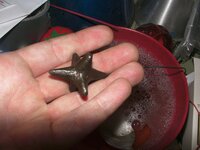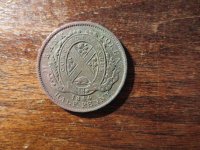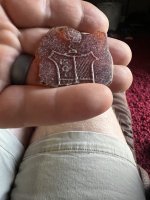Beeps in my sleep
Hero Member
- Sep 6, 2013
- 668
- 782
- Detector(s) used
- Whites 6000, Fisher F2, Garrett AT Pro, XP Deus
- Primary Interest:
- All Treasure Hunting
This was found in front of a fort built in the 1700s to protect against indian attacks. Shippensburg also was invaded by 20,000 confederates during the civil war. I know setlers used to throw these out to stop Indians in pursuit but it also stopped calvary. Does this look like civil war or french and indian war to you guys?


Amazon Forum Fav 👍
Upvote
3




 [h=2][/h]
[h=2][/h]

 ??
??

